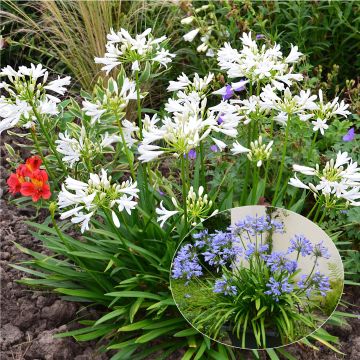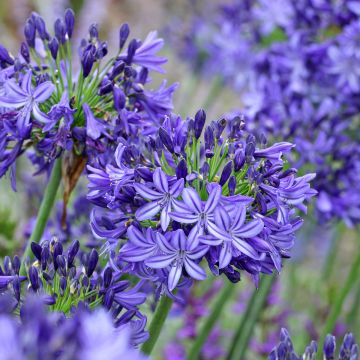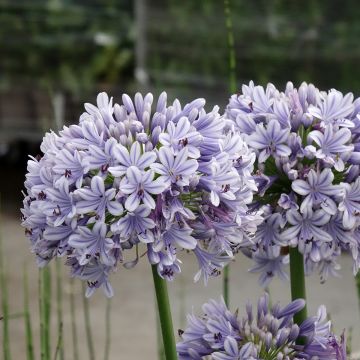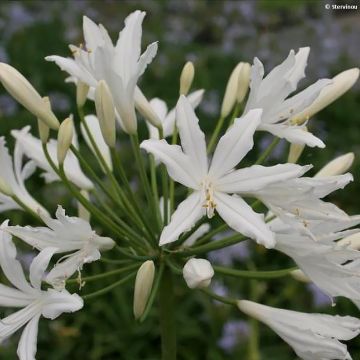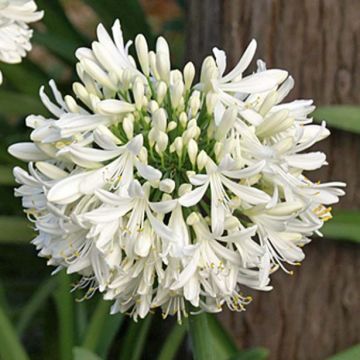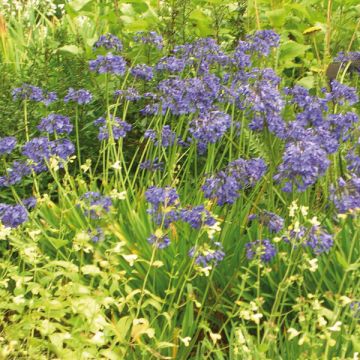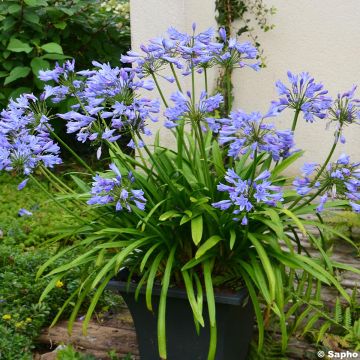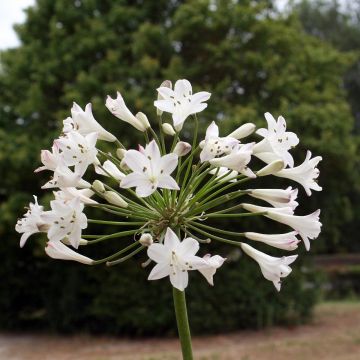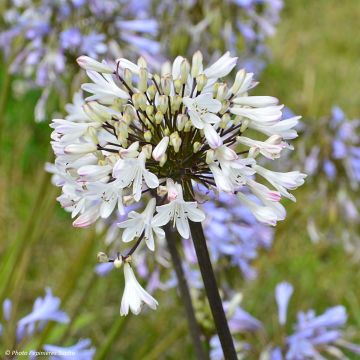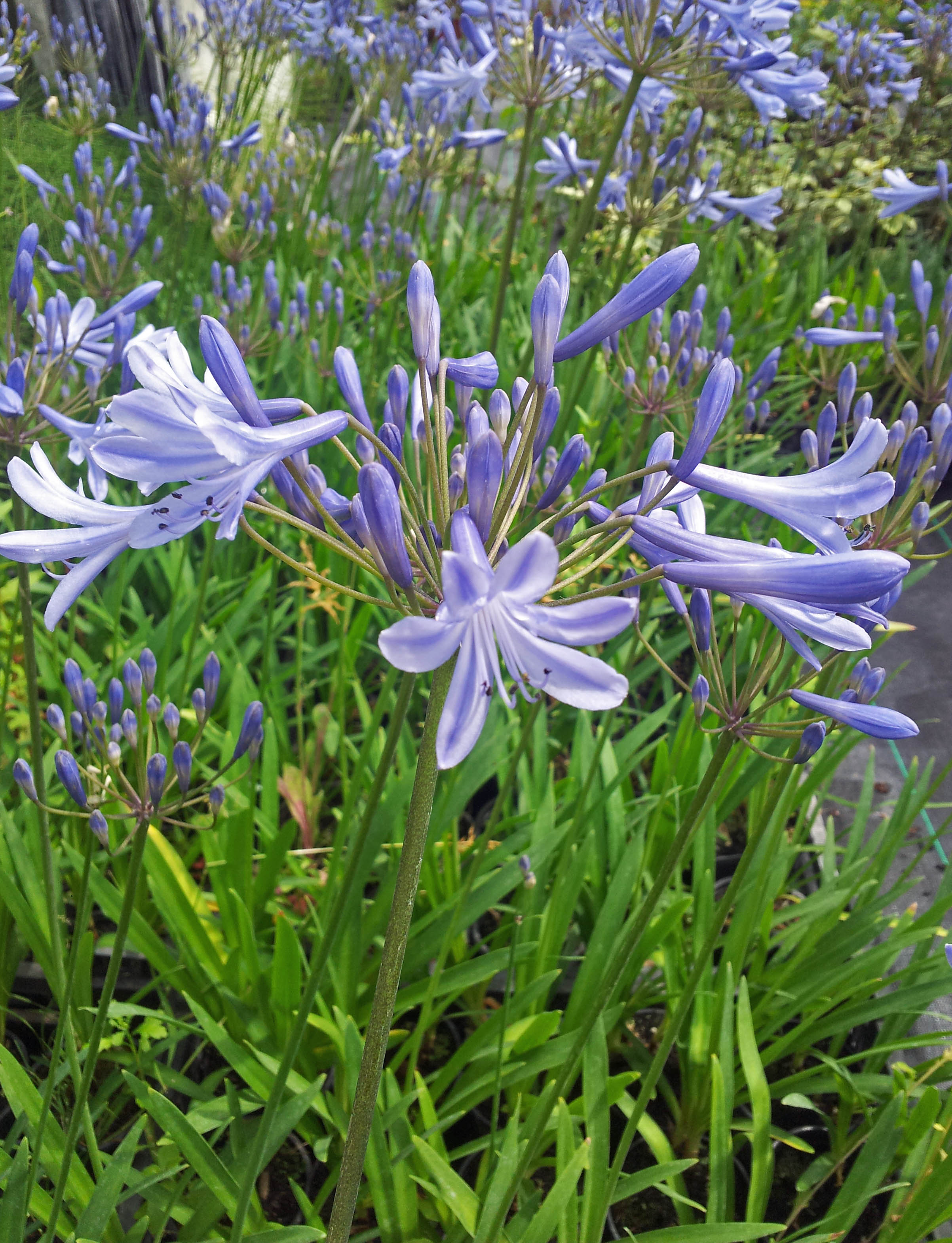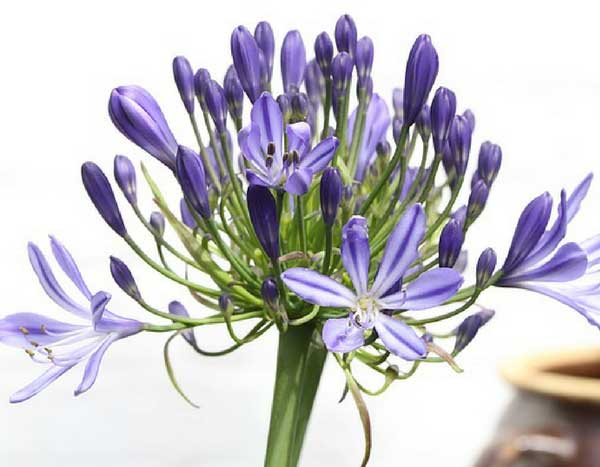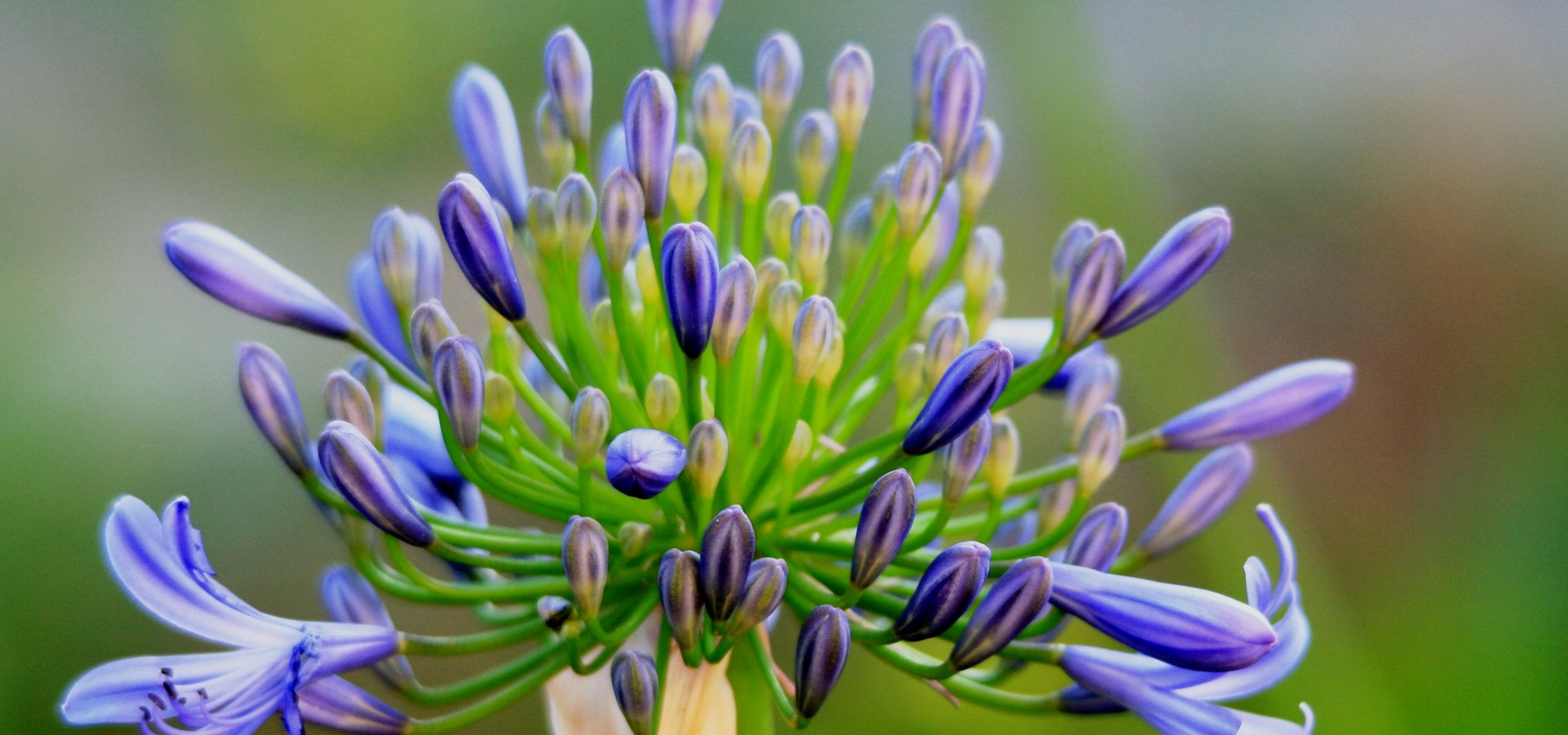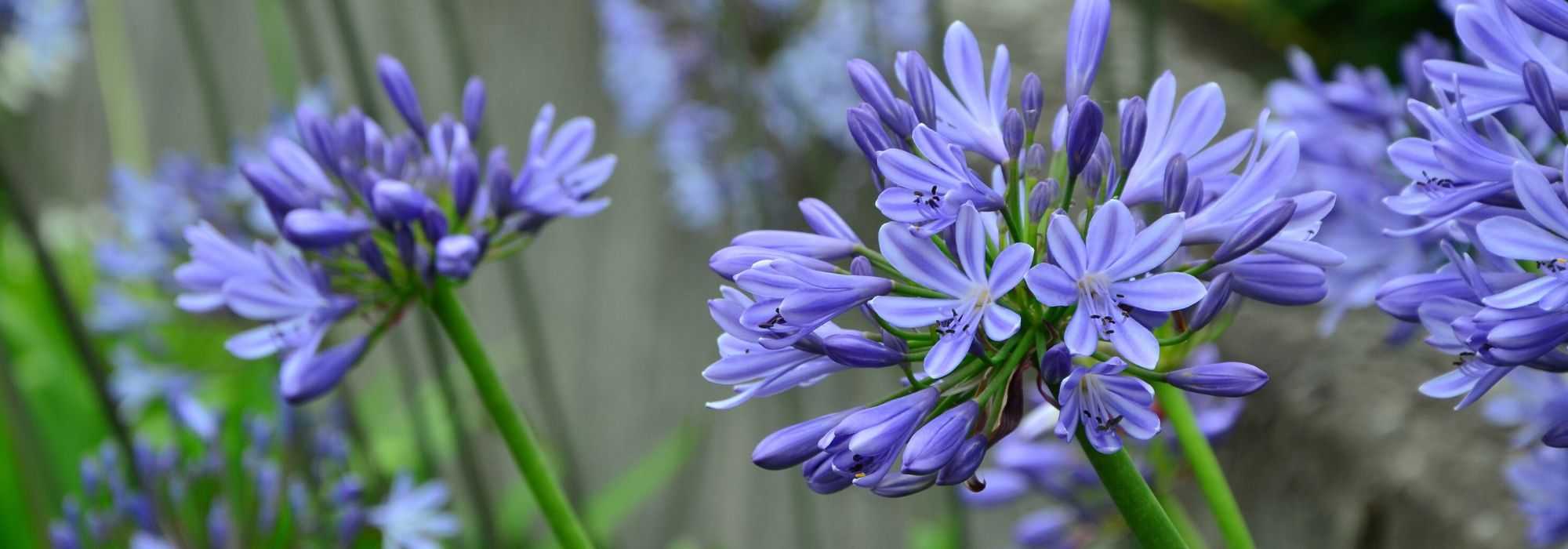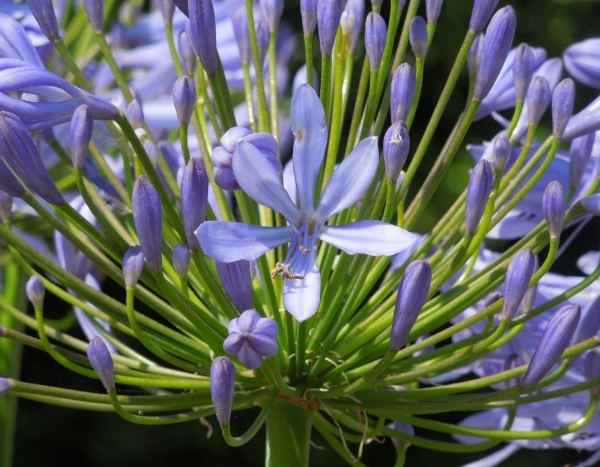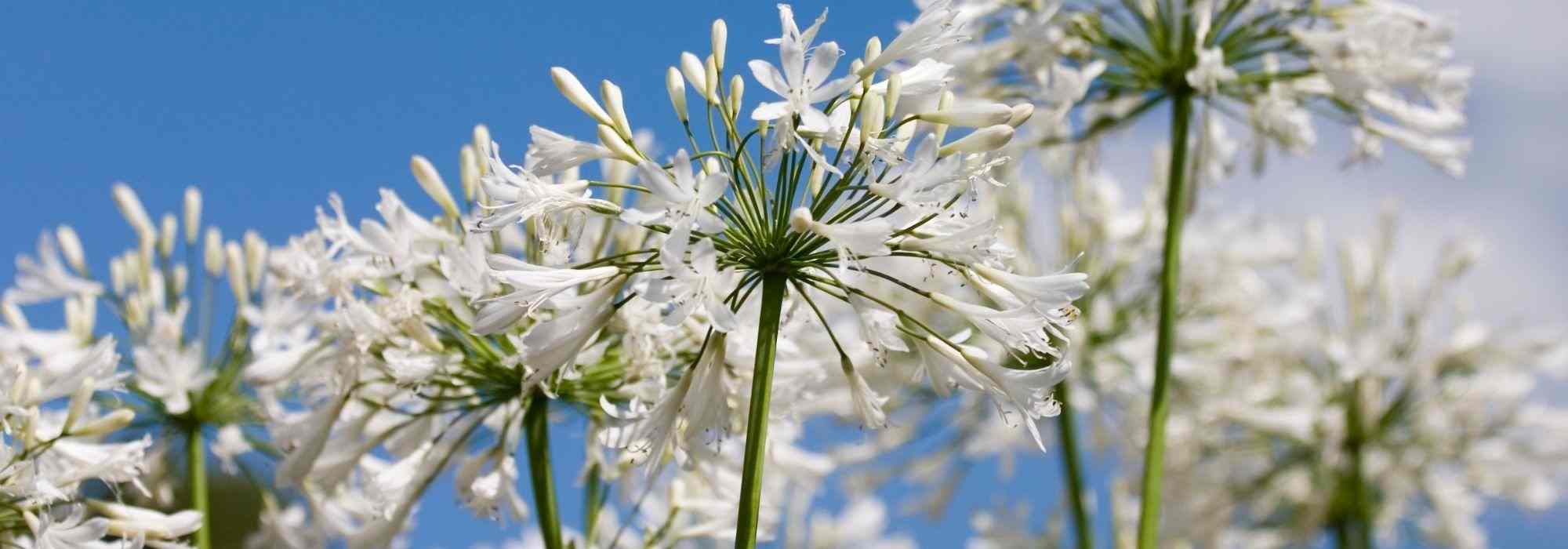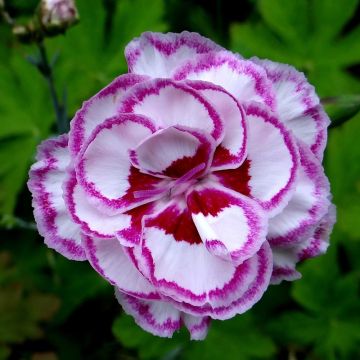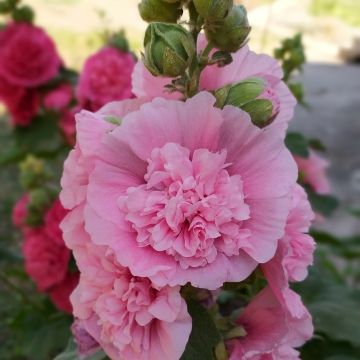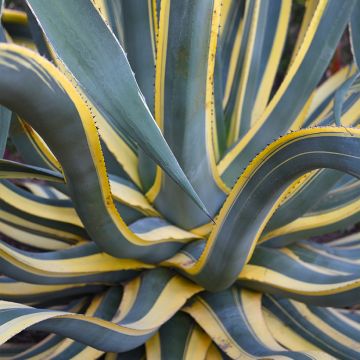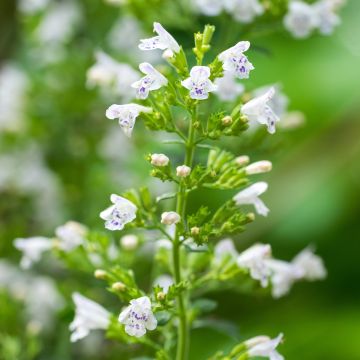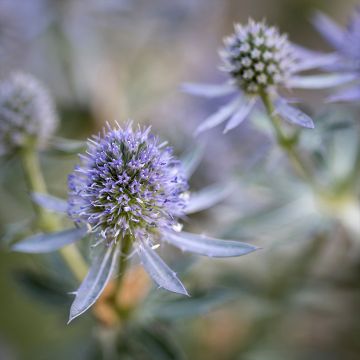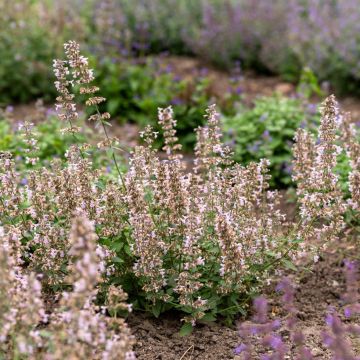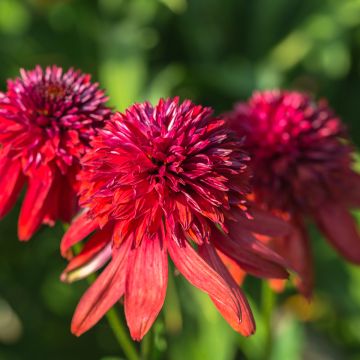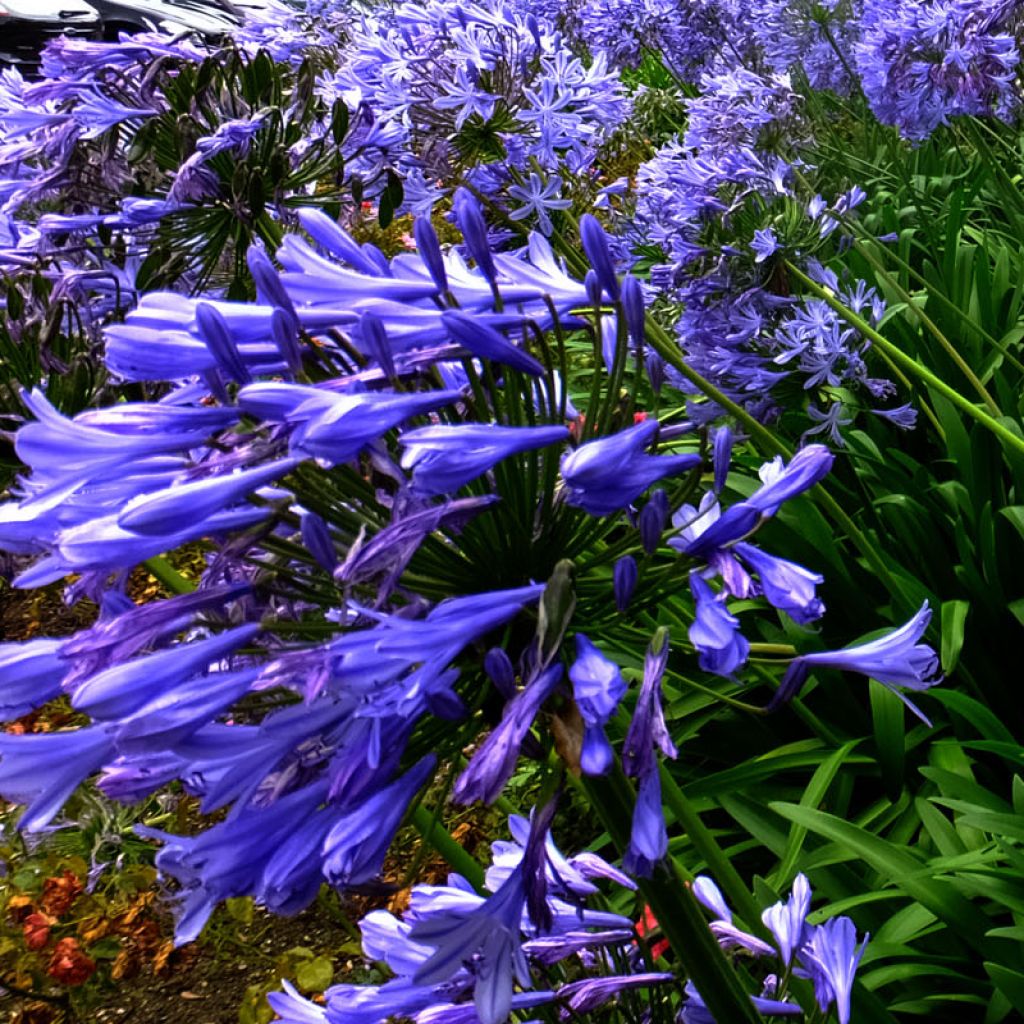

Agapanthus Blue Triumphator
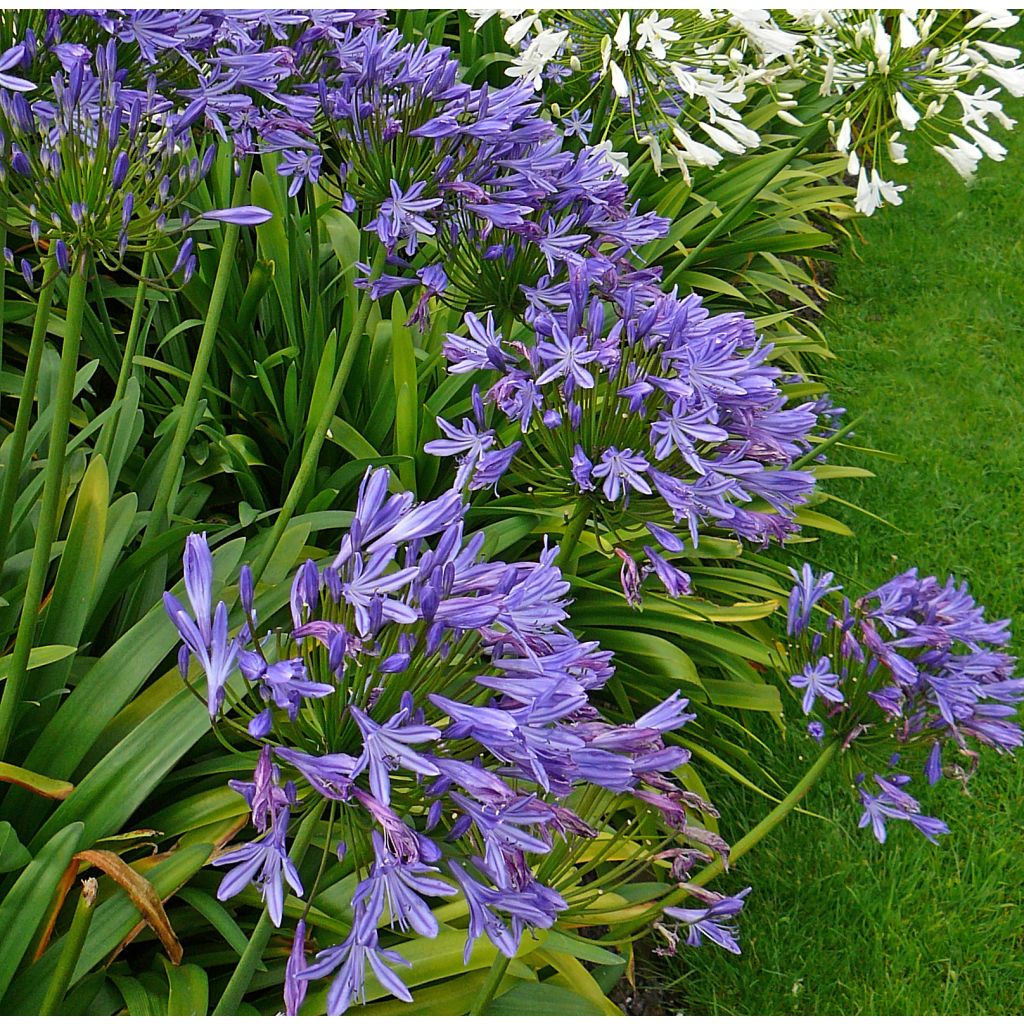

Agapanthus Blue Triumphator
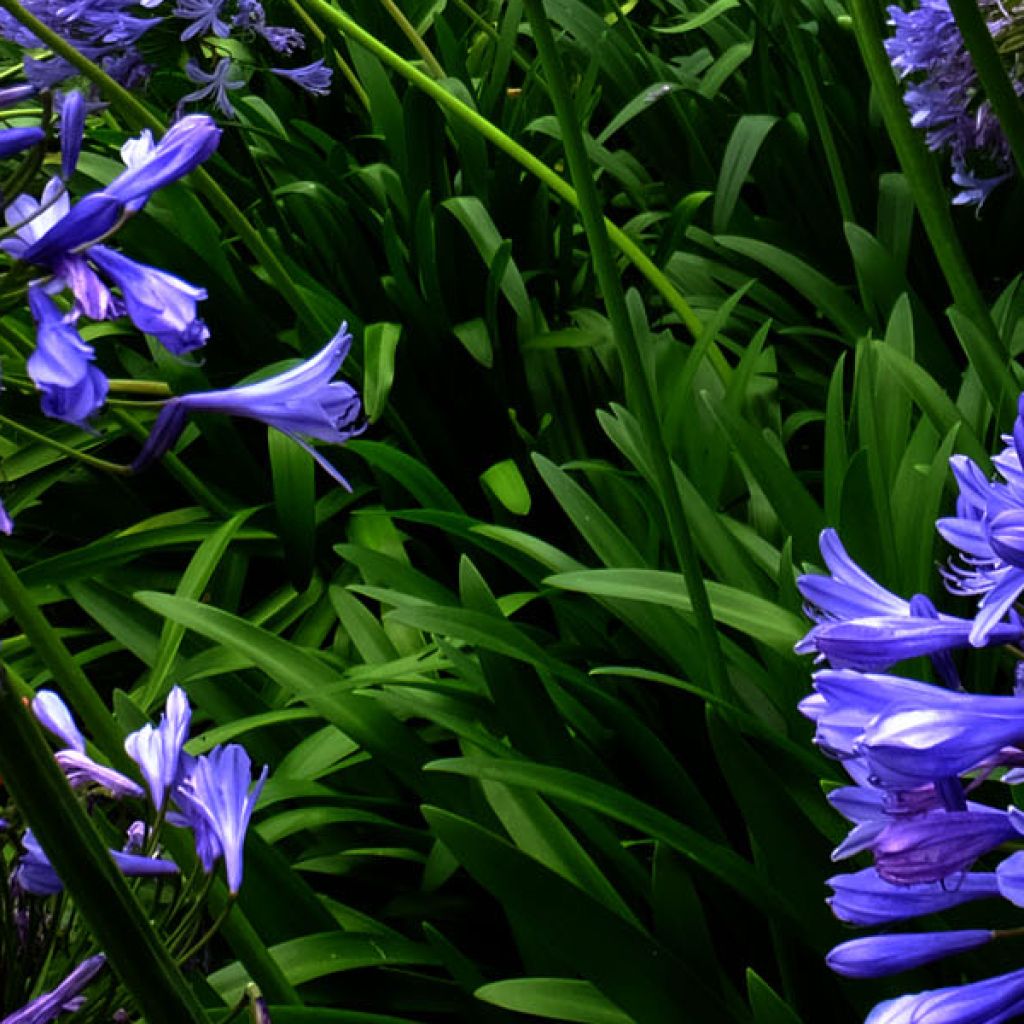

Agapanthus Blue Triumphator
Agapanthus Blue Triumphator
Agapanthus Blue Triumphator
African Lily, Lily of the Nile
Let's see how it grows if the slugs allow me the time. Very good recovery.
rejane, 13/10/2024
Special offer!
Receive a €20 voucher for any order over €90 (excluding delivery costs, credit notes, and plastic-free options)!
1- Add your favorite plants to your cart.
2- Once you have reached €90, confirm your order (you can even choose the delivery date!).
3- As soon as your order is shipped, you will receive an email containing your voucher code, valid for 3 months (90 days).
Your voucher is unique and can only be used once, for any order with a minimum value of €20, excluding delivery costs.
Can be combined with other current offers, non-divisible and non-refundable.
Home or relay delivery (depending on size and destination)
Schedule delivery date,
and select date in basket
This plant carries a 12 months recovery warranty
More information
We guarantee the quality of our plants for a full growing cycle, and will replace at our expense any plant that fails to recover under normal climatic and planting conditions.
Would this plant suit my garden?
Set up your Plantfit profile →
Description
The Agapanthus 'Blue Triumphator' is a highly robust variety of blue Agapanthus. It boasts lush foliage and produces wide, yet light, umbels of flowers on long, straight and sturdy stems that can withstand strong winds. It blooms early and repeatedly, and it is surrounded by a beautiful cluster of bright green ribbon-like leaves that look attractive from spring to autumn. This deciduous plant is relatively hardy, and it can be easily grown in the ground in many regions that are not too cold. It looks stunning when grown in a flower bed, and equally beautiful when grown in a large pot on a terrace.
Agapanthus are plants belonging to the lily family, which originate from South Africa and can hybridise naturally in nature or in our gardens. The cultivar 'Blue Triumphator' is derived from A. campanulatus and is known for its vigorous growth. This perennial plant multiplies quickly from its base with fleshy rhizomes, forming a dense clump of linear and thick foliage. The foliage is shiny green and has a minimum diameter of 50 cm (19.7 in), expanding over time. The abundant and repeat flowering takes place in the summer and lasts about 5 weeks, depending on the climate. Solid stems emerge from the foliage, which can exceed a height of 1 m (3.3 ft). They bear light hemispherical umbels, which measure 20 to 25 cm (9.8 in) in diameter. These umbels are composed of small trumpet-shaped flowers carried by long peduncles. Each flower is made up of light purple petals crossed by a darker median line. If the base of this Agapanthus is well protected, it can withstand temperatures as low as -8/-10 °C.
Agapanthus 'Blue Triumphator' is a stunning addition to any flower garden, adding an exotic and delicate touch to sunny flower beds. This resilient plant requires little maintenance, making it the perfect choice for gardeners of all levels. It is important to provide it with a somewhat protected and south-facing location in colder regions, and to apply a thick mulch to the base during winter. Agapanthus is versatile and can be grown in a flower bed or a pot and looks great when paired with other mauve, white or blue varieties in a minimalist setting.
It is also very decorative in exotic looking flower beds such as Kniphofias, Hemerocallis, shrubby salvias or Crocosmias, at the foreground of ceanothes, phlomis, cistus…
Agapanthus Blue Triumphator in pictures
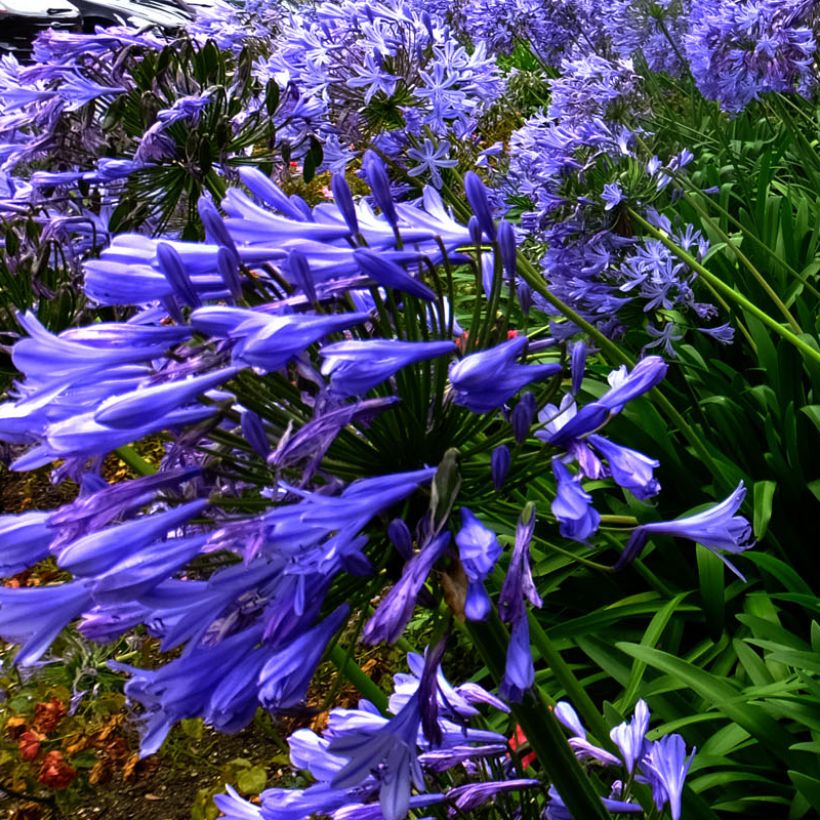

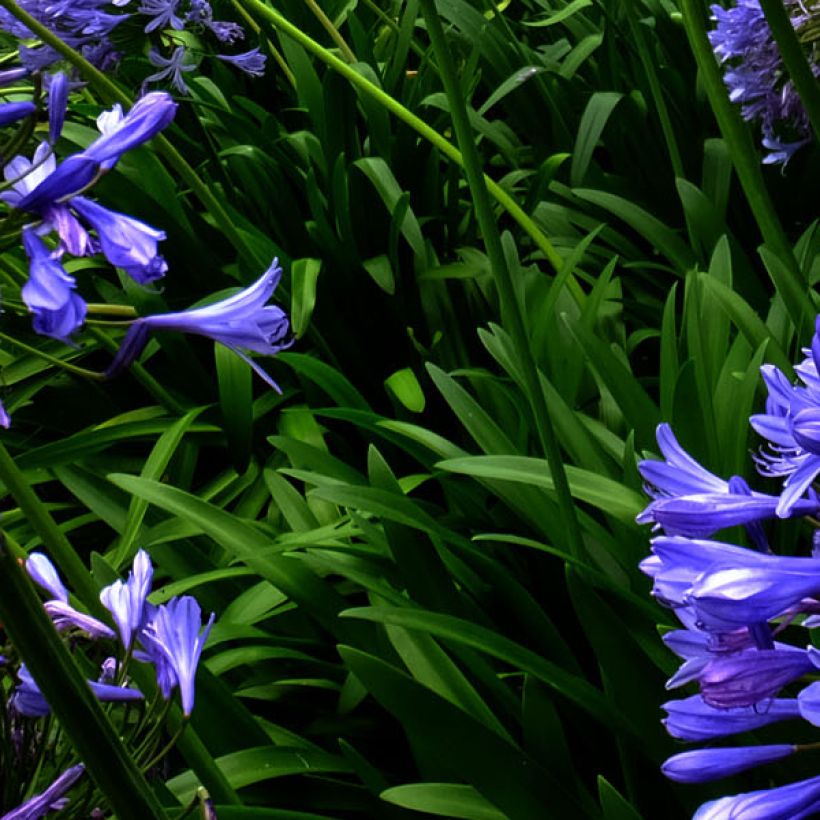

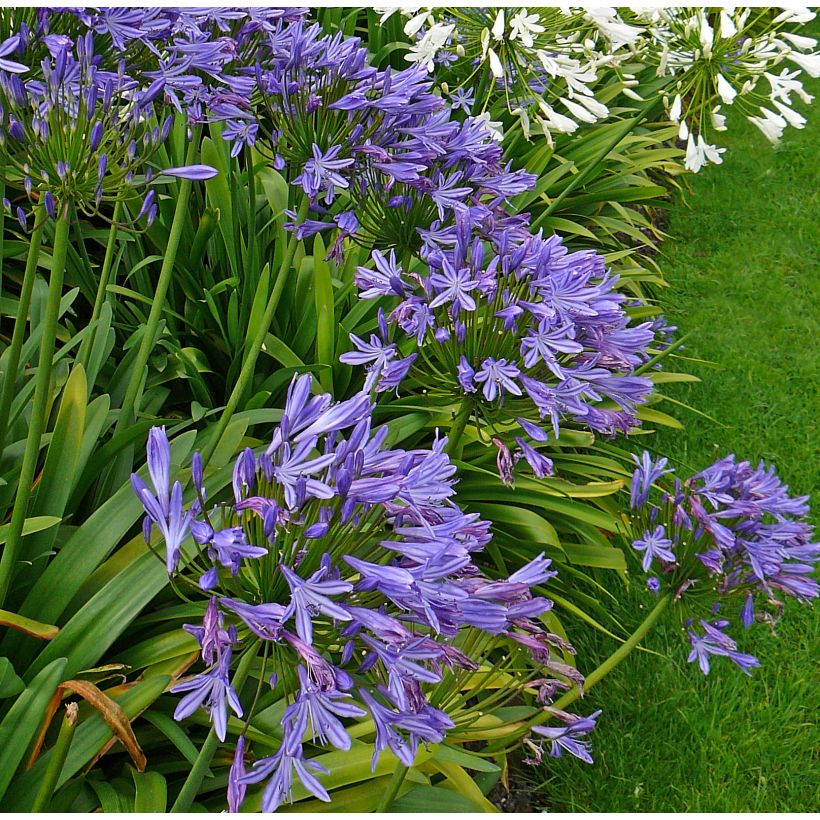

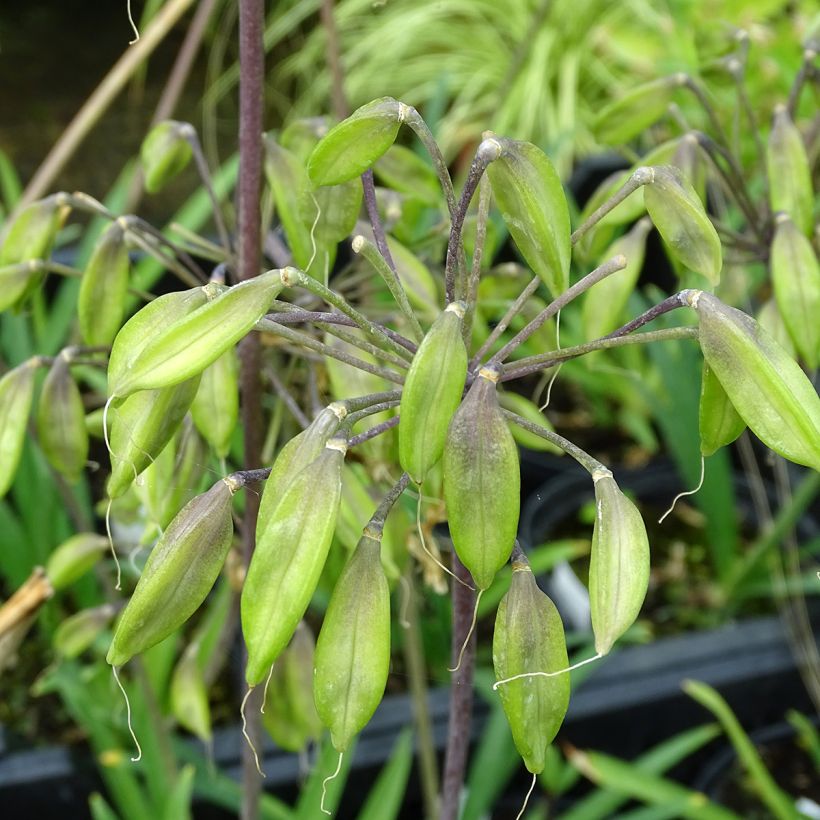

Flowering
Foliage
Plant habit
Botanical data
Agapanthus
Blue Triumphator
Alliaceae - Liliaceae
African Lily, Lily of the Nile
Cultivar or hybrid
Other Agapanthus - Lily of the Nile
View all →Planting and care
To protect Agapanthus plants from the cold, it's recommended to cover their bases with at least 10 cm (3.9 in) of good quality soil. This should be done in spring and the plants should be mulched in winter. If you're growing them in pots, use 3 plants for a 30 cm (11.8 in) pot and protect the pots during winter. Agapanthus plants prefer a rich, moist, and well-drained soil that's enriched with sand. Water them regularly during the growth period (twice a week) but avoid watering them afterwards. These plants are sensitive to excess winter moisture.
The Blue Triumphator variety of Agapanthus thrives in the ground and in containers. In winter, protect the base with a thick mulch so that it can withstand temperatures as low as -8 to -10 °C. Use a well-drained, slightly acidic mixture made of rich compost, sand, and topsoil. This variety seems to prefer shallow containers and will flower abundantly if you regularly feed it with slow-release fertiliser.
Planting period
Intended location
Care
Planting & care advice
-
, onOrder confirmed
Reply from on Promesse de fleurs
Similar products
Haven't found what you were looking for?
Hardiness is the lowest winter temperature a plant can endure without suffering serious damage or even dying. However, hardiness is affected by location (a sheltered area, such as a patio), protection (winter cover) and soil type (hardiness is improved by well-drained soil).

Photo Sharing Terms & Conditions
In order to encourage gardeners to interact and share their experiences, Promesse de fleurs offers various media enabling content to be uploaded onto its Site - in particular via the ‘Photo sharing’ module.
The User agrees to refrain from:
- Posting any content that is illegal, prejudicial, insulting, racist, inciteful to hatred, revisionist, contrary to public decency, that infringes on privacy or on the privacy rights of third parties, in particular the publicity rights of persons and goods, intellectual property rights, or the right to privacy.
- Submitting content on behalf of a third party;
- Impersonate the identity of a third party and/or publish any personal information about a third party;
In general, the User undertakes to refrain from any unethical behaviour.
All Content (in particular text, comments, files, images, photos, videos, creative works, etc.), which may be subject to property or intellectual property rights, image or other private rights, shall remain the property of the User, subject to the limited rights granted by the terms of the licence granted by Promesse de fleurs as stated below. Users are at liberty to publish or not to publish such Content on the Site, notably via the ‘Photo Sharing’ facility, and accept that this Content shall be made public and freely accessible, notably on the Internet.
Users further acknowledge, undertake to have ,and guarantee that they hold all necessary rights and permissions to publish such material on the Site, in particular with regard to the legislation in force pertaining to any privacy, property, intellectual property, image, or contractual rights, or rights of any other nature. By publishing such Content on the Site, Users acknowledge accepting full liability as publishers of the Content within the meaning of the law, and grant Promesse de fleurs, free of charge, an inclusive, worldwide licence for the said Content for the entire duration of its publication, including all reproduction, representation, up/downloading, displaying, performing, transmission, and storage rights.
Users also grant permission for their name to be linked to the Content and accept that this link may not always be made available.
By engaging in posting material, Users consent to their Content becoming automatically accessible on the Internet, in particular on other sites and/or blogs and/or web pages of the Promesse de fleurs site, including in particular social pages and the Promesse de fleurs catalogue.
Users may secure the removal of entrusted content free of charge by issuing a simple request via our contact form.
The flowering period indicated on our website applies to countries and regions located in USDA zone 8 (France, the United Kingdom, Ireland, the Netherlands, etc.)
It will vary according to where you live:
- In zones 9 to 10 (Italy, Spain, Greece, etc.), flowering will occur about 2 to 4 weeks earlier.
- In zones 6 to 7 (Germany, Poland, Slovenia, and lower mountainous regions), flowering will be delayed by 2 to 3 weeks.
- In zone 5 (Central Europe, Scandinavia), blooming will be delayed by 3 to 5 weeks.
In temperate climates, pruning of spring-flowering shrubs (forsythia, spireas, etc.) should be done just after flowering.
Pruning of summer-flowering shrubs (Indian Lilac, Perovskia, etc.) can be done in winter or spring.
In cold regions as well as with frost-sensitive plants, avoid pruning too early when severe frosts may still occur.
The planting period indicated on our website applies to countries and regions located in USDA zone 8 (France, United Kingdom, Ireland, Netherlands).
It will vary according to where you live:
- In Mediterranean zones (Marseille, Madrid, Milan, etc.), autumn and winter are the best planting periods.
- In continental zones (Strasbourg, Munich, Vienna, etc.), delay planting by 2 to 3 weeks in spring and bring it forward by 2 to 4 weeks in autumn.
- In mountainous regions (the Alps, Pyrenees, Carpathians, etc.), it is best to plant in late spring (May-June) or late summer (August-September).
The harvesting period indicated on our website applies to countries and regions in USDA zone 8 (France, England, Ireland, the Netherlands).
In colder areas (Scandinavia, Poland, Austria...) fruit and vegetable harvests are likely to be delayed by 3-4 weeks.
In warmer areas (Italy, Spain, Greece, etc.), harvesting will probably take place earlier, depending on weather conditions.
The sowing periods indicated on our website apply to countries and regions within USDA Zone 8 (France, UK, Ireland, Netherlands).
In colder areas (Scandinavia, Poland, Austria...), delay any outdoor sowing by 3-4 weeks, or sow under glass.
In warmer climes (Italy, Spain, Greece, etc.), bring outdoor sowing forward by a few weeks.
































